Last chance saloon: tracing the pop culture heritage of the Jaguar XF
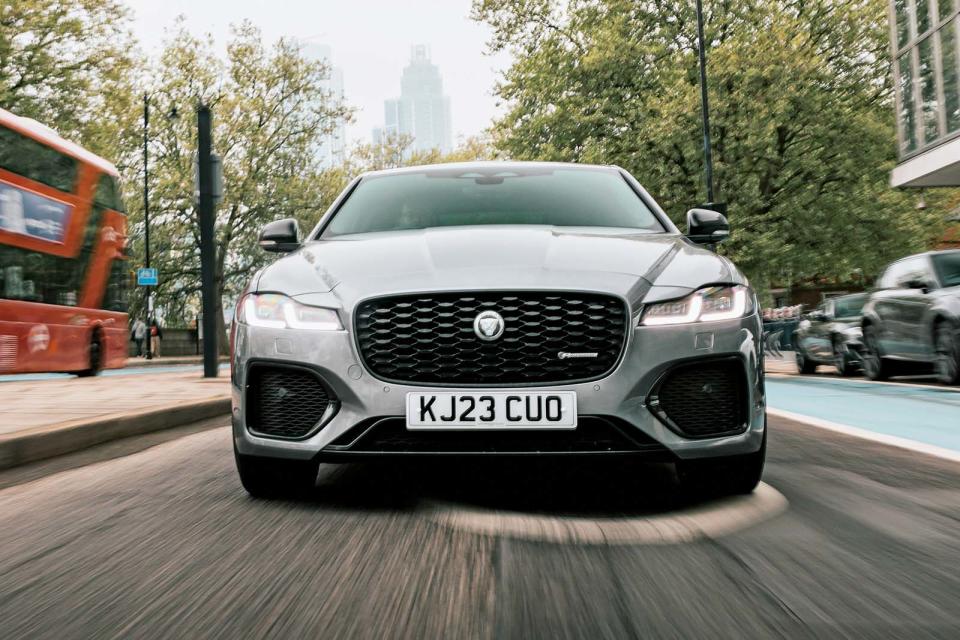
Production of XF, XE and F-Type models ended last month, although cars will be available from stock
Who buys a Jaguar saloon? From about now, nobody will - at least for a while, because this is one of the last of the current four-door Jaguars that will be built, prior to a hiatus for this so-traditional style of car whose replacement still lingers some time off in the future.
But who has been driving them up to this point? And what's the appeal? We know that a four-door Jaguar is coming down the line, but the next one will be electric and, word is, far more expensive than any previous one. Will former customers still want such a thing?
To investigate, I've got into one of the last of the current breed. The Jaguar XF is a car we've liked very much since the first version was launched in 2007, when we said it was a "job done" and the "world-class" car Jaguar needed and just at the right time, with both manufacturer and model achieving their goals.
The XF was Jaguar making a sleek and good-looking, fine-riding and great-handling, well-priced and seemingly well-assembled saloon car. Just like it needed to.
We still like it 17 years and a second generation of XFs later. It remains one of the best-handling cars in its class, and the XF's consistency with that has given its drivers something to smile about.
What Jaguar has managed less well is to make cars that convince millions of people to buy one; it has not followed up a brilliant initial offering, like the XF, with other derivatives straight away. Jaguar has never - and this is why the XF is one of the brand's last saloons before it reinvents itself as a luxury electric car maker - sold enough cars.
So what went wrong? By way of research, I'm going to visit some haunts of famous Jaguar owners to see if I can get some insight into what makes them tick. Find, perhaps, who Jaguar needs to talk to.
I have much to ponder, then, while standing on a street in Hammersmith, west London, looking at an Edwardian (or Victorian - sorry, no expert) terrace in front of me, with a very similar-looking house behind me. Except the one behind is from the reign of Elizabeth II and wasn't a house at all as recently as the 1980s. It was a used car lot, in fact, owned by one of the most famous Jaguar owners of all. Fictional, yes, but a bona fide Jag driver. I give you Arthur Daley.
Arthur Daley: used car salesman, general wheeler-dealer and "mid-level professional criminal of mature years, a minor conman", according to a glowing Wikipedia biography.
If one was to draw up a list of fictional characters you would consider 'lovable rogues', there's a strong chance George Cole's Arthur Daley from Minder would be on it.
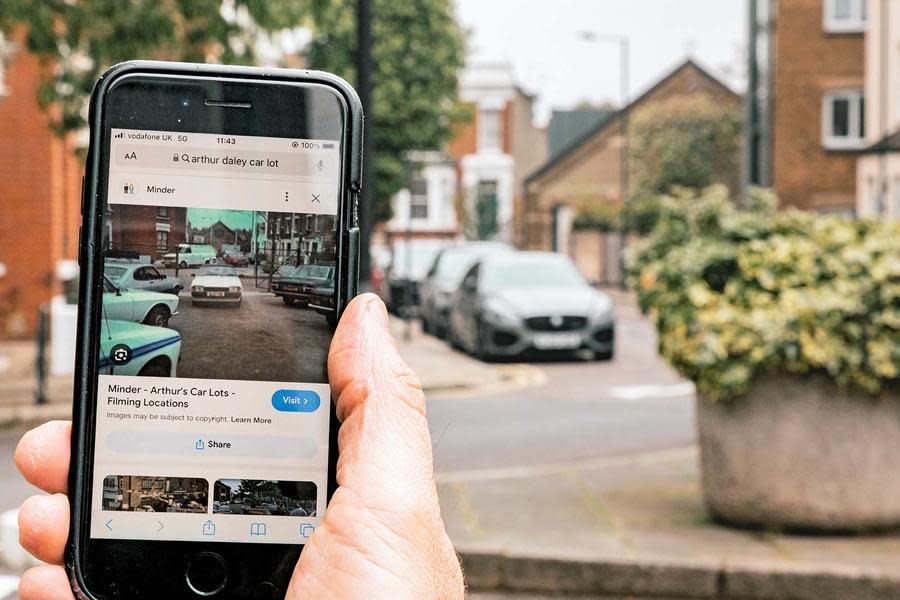
He mostly drove an XJ, initially an XJ6 4.2 Series II in early Minder series, with Sixes, Double Sixes and Jaguar and Daimler Sovereigns later.
I would have brought an XJ along instead of the XF, but Jaguar hasn't made one of those for five years, when the final, lan Callum-designed XJ, the best-looking modern executive/luxury car by miles to my eyes, was retired from sale. It was the best-driving luxury car of the time, too.
He didn't play by conventional rules, Arthur Daley, but he knew a thing or two about luxury: he got a minion to do the hard graft for him, drank at a private club and smoked expensive cigars, and I can only imagine how snug his camel coat felt.
Alas, modern west London residential streets have no time for Daley's way of earning a living, so I can't park the XF up on the lot and interview his modern equivalent about Jags. And truth be told, a modern saloon like this would fit in better around here if it was an electric crossover.

Hammersmith, clearly, has moved on, so I try one of Daley's lock-ups instead, tucked under some railway arches in nearby Shepherd's Bush - but even that's a CrossFit studio rather than the storage location for some goods of dubious origin. Like the smell of his cigars, the spirit of Arthur Daley has long since dissipated.
The XF takes me onwards, then, to where I might find grubbier industry and less gentrification. I go to the hangout of other Jaguar people who were society's rebels and outsiders but who needed a Jag's blend of characteristics. To Southall Gasworks it is.
The Sweeney, the Metropolitan Police's Flying Squad division, personified in this case by DJ Jack Regan, played by John Thaw, would fire up their Fords to chase Jaguars around scruffy back roads and derelict warehouses right here.
When Squeeze sang "the Sweeney's doing 90 'cos they've got the word to go, they get a gang of villains in a shed up at Heathrow", the sheds in question would have been here, and the villains would have arrived in a car like this: a sporting Jaguar saloon. And with good reason: Jaguars drove well, rode comfortably and could seat a healthy number of wrong uns. Crucially, they were fast too.
Today's XF, even with a 2.0-litre four-pot like this, would of course have left an XJ-engined old Jag for dead. But the driving character that appealed to scoundrels back then is the same thing that tempts Jaguar-driving rogues today.
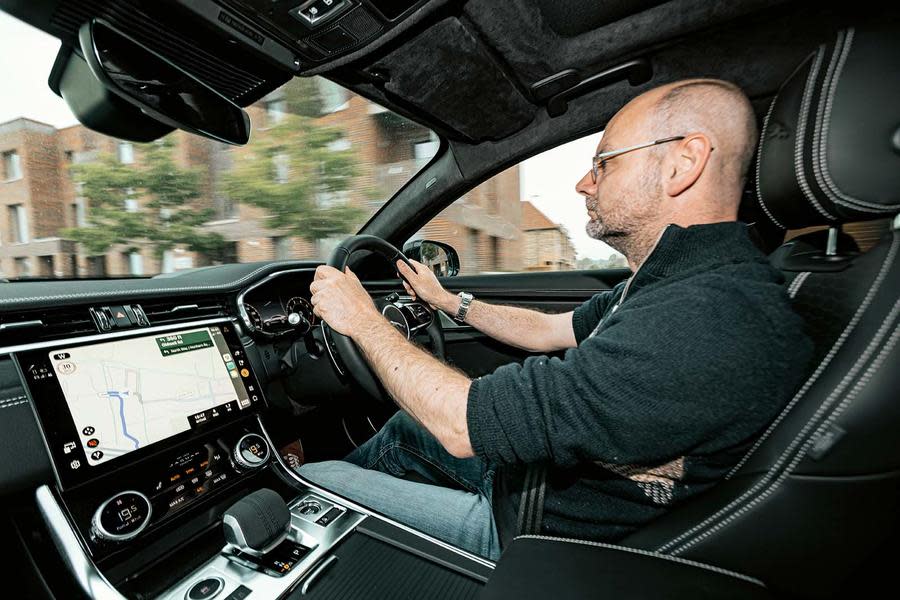
This XF doesn't ride with the same absorbency as a classic car, but it really does ride well by modern standards, and while it has four cylinders instead of six, its 247bhp and 269lb ft are good for 0-60mph (let's stick with old-school 0-60, not the newfangled 100kph-compatible 62mph) in 6.5sec.
This is a quick car, then, and rear-drive, with switchable stability control and fast steering, so ideal for wangling around derelict Southall while I imagine the Granada estate I spotted earlier in a side street is chasing us. Shut it, etc.
But again, reader, no. There is more gentrification here, too, done rather pleasingly, in the form of The Green Quarter: fancy homes, £399,000 and upwards; roaming security; large play and leisure areas; 1km of canal frontage; 13 acres of park, it says here, and a really rather good oat milk latte from the cafe.
There's no place here, tash, for rebels and old-interested in Jaguars, or those invested in finding out what makes them tick.
The XF doesn't look too out of place, at least, although it would look more suited to the area if it was an e-scooter or a supermarket delivery van.
Clearly I need to head to a location where I'm more likely to find, and which better suits, a modern jaguar saloon. If there's no room for the antihero, perhaps I need to find a more discerning kind of owner, a more establishment-friendly type.
They don't get much more establishment than our Secret Intelligence Service, MI6, so that's where we are headed. Millbank is the road you would take to travel from the SIS building on the south bank of the Thames to Whitehall farther along on the north bank: if you're a top secret-agency bigwig, that's the route you'll be driven.
Certainly it's the route MI6's fictional head, M of Bond film fame, takes, most notably in Skyfall.
Obviously Dame Judi Dench is not in any sense a wrong 'un, but she has got a Jaguar, even if she rides in the back of it.
Establishment? Certainly. On the right side of things? Of course. But even here, in the heartland of law and democracy, there are shades of grey and allowed indiscretions.
Shadows; a definite nonconformity. There's an edge to proceedings that's quite... British.
In Skyfall, Bond and M swap Jaguar for Aston Martin, two brands that sit alongside each other with ease (they once did, in fact, under Ford control), but no swaps for me as I head to our last outpost of fictional Jaguarness, necessary in order to stretch the XF's legs.
A drive out first on the M40 and then onto some twistier Home Counties back roads reminds me why I will miss a saloon like the XF, which was developed on roads that are definitely unique to our island.

It's basically 5m long, the XF, and 1.98m wide, but its agility and steering precision mean it never feels that big. And it's priced more like a smaller car these days, its £41,265 being more in line with BMW 3 Series money, as opposed to the 5 Series with which it ostensibly competes.
With a relatively light four-cylinder petrol motor, it has a balance and poise that you won't find in most EVs, nor any SUVs. It's genuinely good fun in a way that most saloons of its ilk, and particularly cars of taller ilks, are simply not.
In its commitment to being a dynamic-driving saloon, I wonder if, as it ages, there has been an irascibility, a reluctance to compromise and join the crowd and a refusal for it to conform.
And if that's not a hammed-up, creaky segue into the last of our famous Jaguar owners, Oxford's MkII-owning Inspector Morse, another famous Jaguar non-conformist (and John Thaw again), I don't know what is.
Morse first aired in 1987, but the MkII first appeared in 1959. Forward 30 years from now, then, and wonder what kind of car from today, a future classic, would a fictional Thames Valley police inspector drive? Could it be this XF, or the recently departed XJ? An F-Type? Maybe.
Put it this way: I don't think TV producers working on a Morse reboot in 2050 will be on the hunt for a Volkswagen Tiguan.
Ultimately, I think there is something different, unusual, often rebellious, sometimes cranky, often uncompromising, about the owners of these Jaguars, and it says something about the car itself.
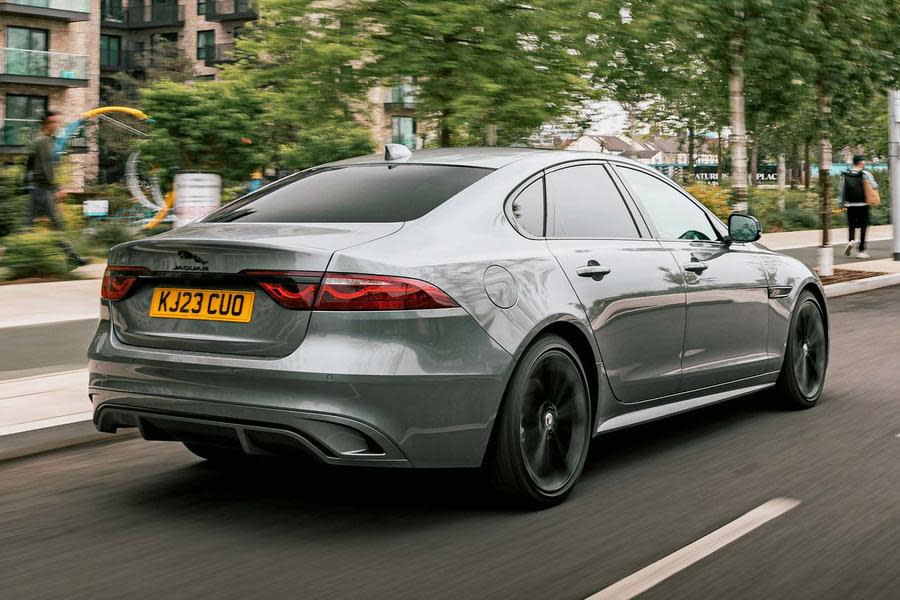
I do worry I'm making the Jaguar saloon in general, and the XF in particular, sound like some kind of outcast and heroic failure, and if so that wouldn't be fair.
The XF arrived at a time when Jaguar desperately needed a convincing saloon of its own, and this car gave its maker just that; and although the XF is disappearing when the brand's position is similarly perilous, let's not forget how successful and well regarded it has been in the meantime against cars as solid and respected as the BMW 5 Series and Mercedes-Benz E-Class.
The Jaguar may not have had the interior tech of rivals, nor the breadth of their line-ups, but always in base form, and usually in its sporty R form, it has out-driven them convincingly. It has won numerous design awards and at one point Jaguar even finished top of the JD Power/What Car? customer satisfaction survey.
For a time, Jaguar used the strapline fast, beautiful cars, and the XF was just as worthy of that as an XK or F-Type. It didn't save the brand but gave it a solid underpinning from which the F-Type, F-Pace and elegant new XJ could emerge, while in the Sportbrake estate and XE saloon, the XF was joined by other five-seat models that were the envy of their classes to drive. Today they still are.
As the current Jaguar saloon heads to retirement, it is still an elegant, bold, nonconformist choice, intelligent and unafraid to stand outside the establishment. When a new Jag arrives, I don't think those would be bad traits to retain.
Tracing Jaguar's saloon success
Jaguar MkVII
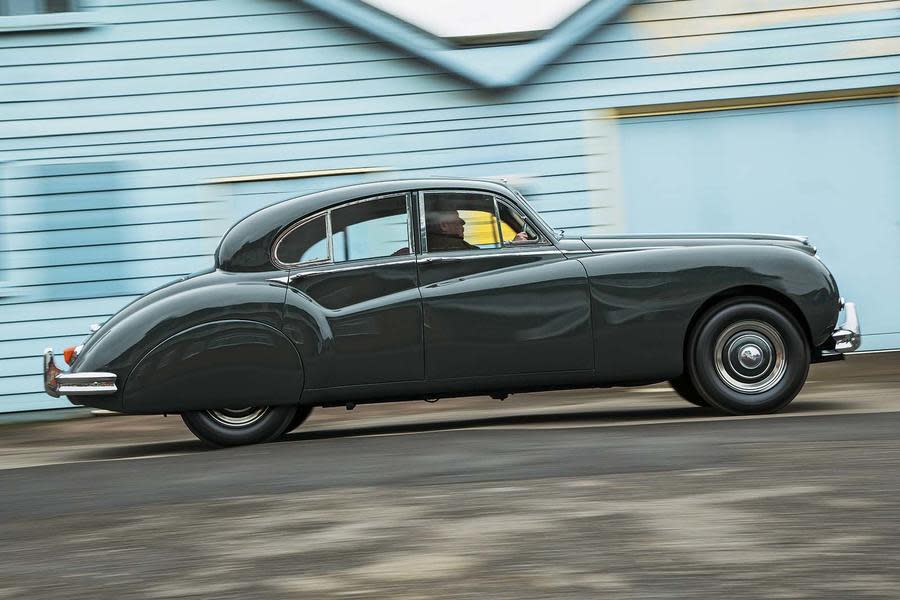
The MkVII was powered by the then new XK engine and could reach a headline-grabbing (at the time) 100mph. More importantly, the model gained a foothold for Jaguar in the US market, where the brand remains highly regarded today
Jaguar 2.4 Litre and 3.4 Litre (later known as MkI)
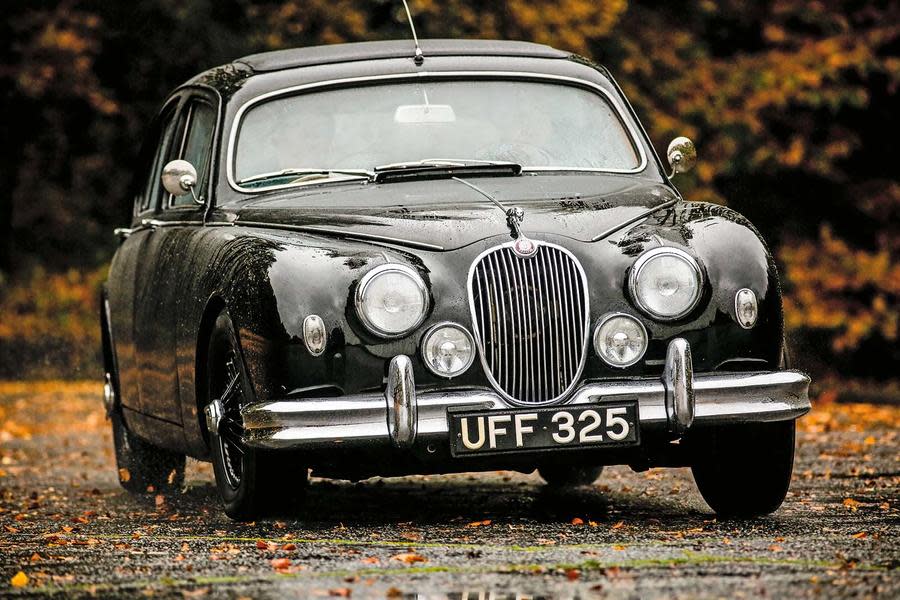
A smaller, more dynamic Jaguar than its larger siblings and with more to it than heavier, more stately competitors. If ever there was a car that set the tone for what a Jaguar saloon could be, then this is probably it.
XJ6 Series I
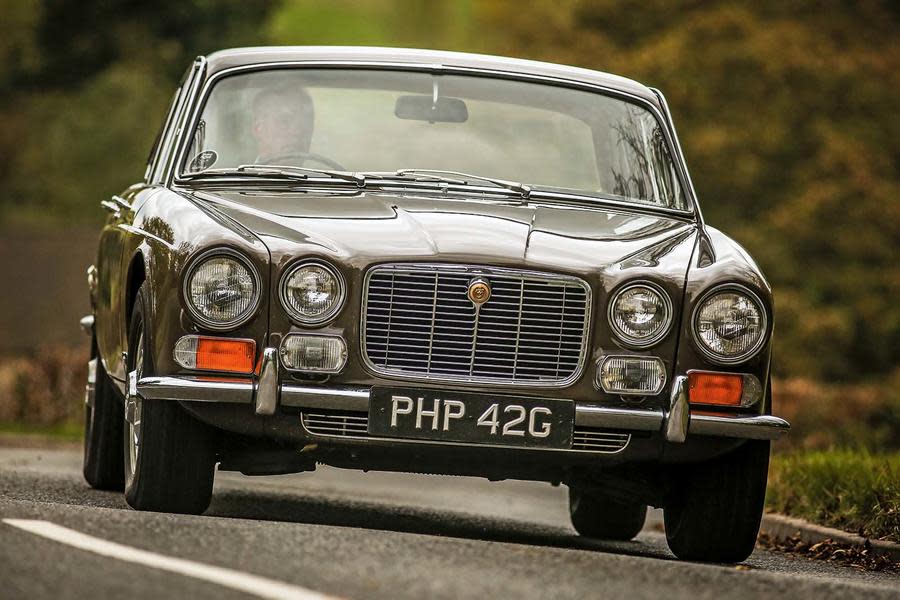
The finest saloon in the world when it was launched in 1968. Based on an earlier E-Type 2+2 design study, the XJ6 was the last car designed by Sir William Lyons, and it set a design template that lasted Jaguar for decades (probably too many decades, to be fair).
Jaguar XF
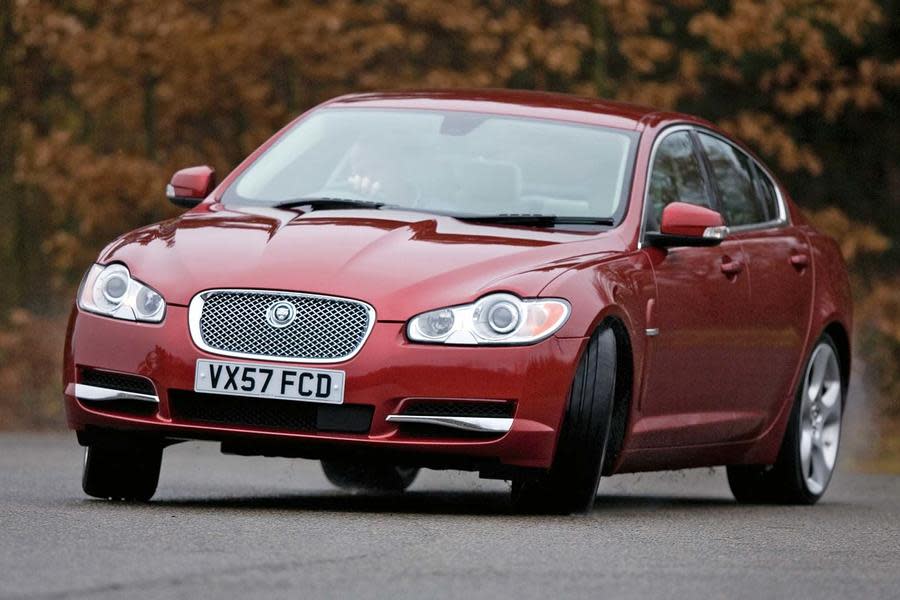
Thankfully, former Jaguar design director Ian Callum had no interest in producing retro-look Jags. He moved their appearance on quite dramatically – not to mention elegantly – with the XF line and later once again the fabulous 2010 XJ.
]]>

 Yahoo Autos
Yahoo Autos 